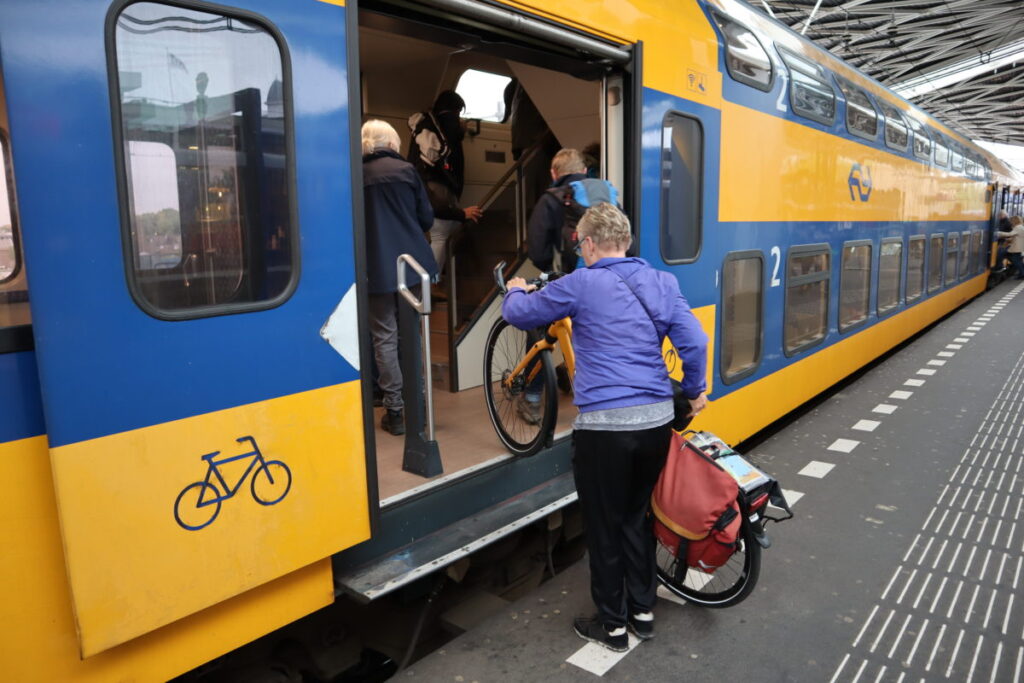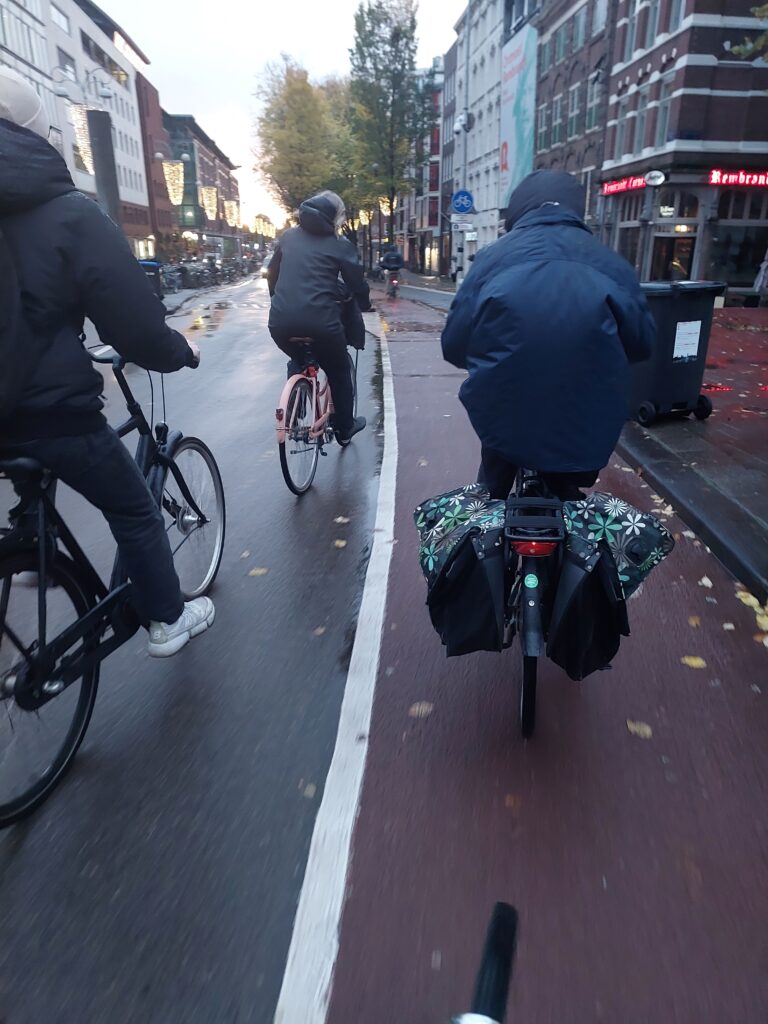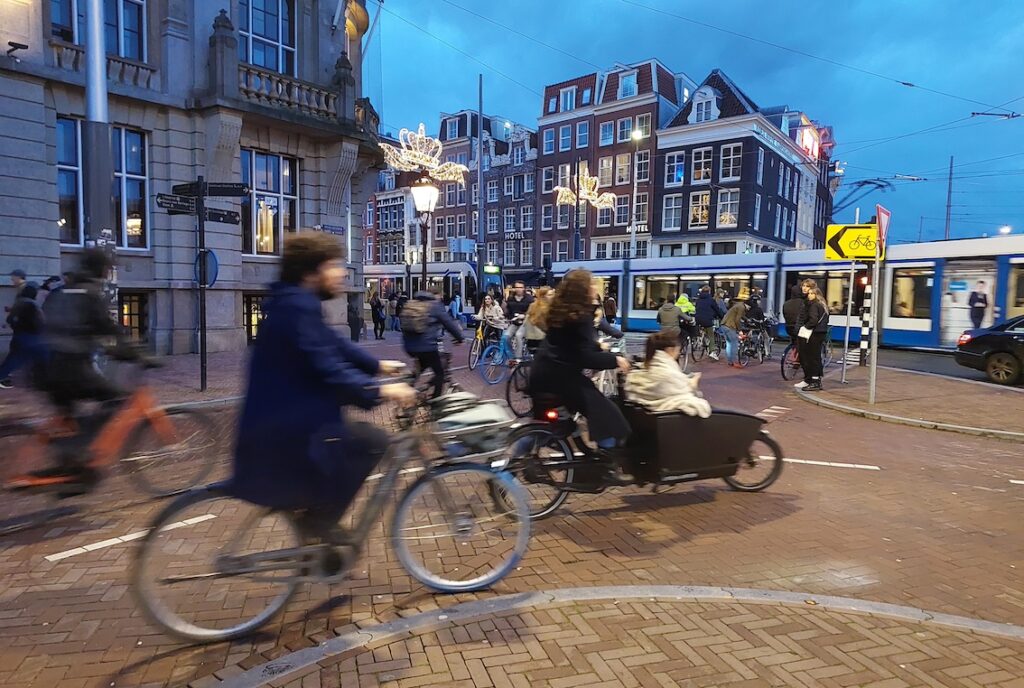Ana Castan | LinkedIn
Selected final essay, published 5 July 2020
Ana is a Cycling Advocate and Entrepreneur. She operates Amsterdam en Bicicleta, a bike tour company in the Dutch cycling paradise, Amsterdam
Unraveling the Cycling City MOOC on Coursera
When I relocated to The Netherlands, I was amazed at how easy it was to move around on my bike. Since it made me feel so happy, I decided I wanted to show my experience to the world. So I started a business of bike tours in the capital city of cycling: Amsterdam.
I have guided visitors on tours of Amsterdam by bike for the past five years. Most of them are not urban cyclists at all. Through our conversations, I have learned how many people see cycling in their cities: it’s almost impossible.
This is why I focus here on debunking two myths that seem to be permanently planted in everyone’s head. Ultimately, taking baby steps can help your city to be like Amsterdam.
Myth #1: “Of course, Amsterdam is a Cycling city. Dutch people have been riding forever.”
I guess it will be surprising for you as it was once for me: The Netherlands was not always a country dominated by cyclists like it is nowadays.
Between the 1950s and 1970s, a growing number of cars on roads threatened cyclists and pedestrians in Dutch cities. That was typical in the Western world. So, how did the Dutch manage to go against the flow?
In 1971 a group of citizens fed up with the increase of traffic casualties, including 400 children, became pro-cycling activists. The Oil Crisis of the early 1970s helped boost their cause. Faced with protests and an energy crisis, Dutch politicians became more aware of cycling’s advantages and shifted their transport policies. One of the first was a simple policy action: car-free Sundays.
Today, The Netherlands is a country where riding your bike is the easiest and most convenient way to get from A to B. But will it continue to be this way?
Kuipers notes, “In striking contrast with usual patterns in 20th Century in Europe, both native Dutch and immigrants and their descendants, take the car or the scooter (instead of the bike).” Discussion now focuses on how this national “habitus” is breaking apart. The Dutch have seen their bikes as a tool so far, but the meaning of cycling in Dutch society is changing from an unreflective and unpretentiousness transport mode to merely another symbol of the exclusiveness typical of today’s upper middle-classes. Cycling is becoming a self-conscious lifestyle.
As I look around The Netherlands, what Kuipers says makes sense in some way. Five years ago most of the bikes looked similar: old, dark colors, and no gears. The messy appearance of Dutch bikes was a big surprise for my visitors. However, two years ago I started noticing some changes. New brands with beautiful and modern designs had shown up. It gives the impression that there is now a desire for distinction in some way. The bike has become a tool for that.
Despite these possible changes in the Dutch mentality and cycling patterns, the national and regional governments, organizations, researchers, and planners are working together to increment the kilometers by bike in 20% for 2027. The ambitious “Tour de Force” agenda starts its second stage this year. It focuses on creating more space for the bicycle and to make cycling an obvious, attractive, safe mode of transport and a way to exercise and spend leisure time.
This is how The Netherlands became a cycling paradise: citizens asked for it back in the 1970s and still do so today. What can you do right now for a such a change in your city?
Myth #2: “This is not possible in my city.”
I have heard that firm statement hundreds of times during my bike tours. Maybe you are as skeptical as all those people I have met. Here is how a baby step can help your city: think of street space differently.
“(Streets are) not as only spaces for movement, but valuable public space in themselves” – Nello-Deakin.
This sentence reminds me of my childhood in Madrid. A street is a place where adults and children might socialize and play. Thanks to The Urban Cycling Institute, I now see the public space of my city in a different light. If you come from a big city, surely you have memories playing on the streets.
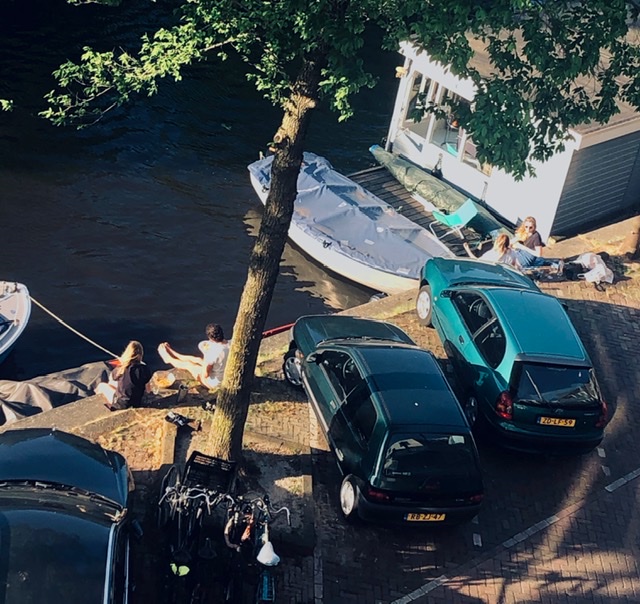
One day while I was on my balcony, I watched people enjoying dinner with a view of the water. Colville-Andersen’s theory about the unfair distribution of space between cars and people came to my mind. Wouldn’t it be nice to have that space free of cars so that neighbors could chill in sofas, chairs, and other street furniture? However, Nello-Deakin points out that fairness is not only about space. It is also about road speeds.
After all, as Ivan Illich noted in Energy and Equity (1974), “high speed is the critical factor which makes transportation socially destructive.” Research and experience shows that roads with speeds over 24km/h are monopolized by motorized traffic, thereby excluding pedestrians and cyclists. On my slow Amsterdam street, it’s no problem to chill out with my neighbors.
I suggest this baby step if you want your city to follow the lead of Amsterdam: push local officials to implement traffic calming measures. This will slow traffic to speeds that allow for vibrant street life to develop.
So your city has two options: Take space for people from cars, per Coville-Andersen, or just implement traffic calming measures and allow a natural organization between cars and humans.
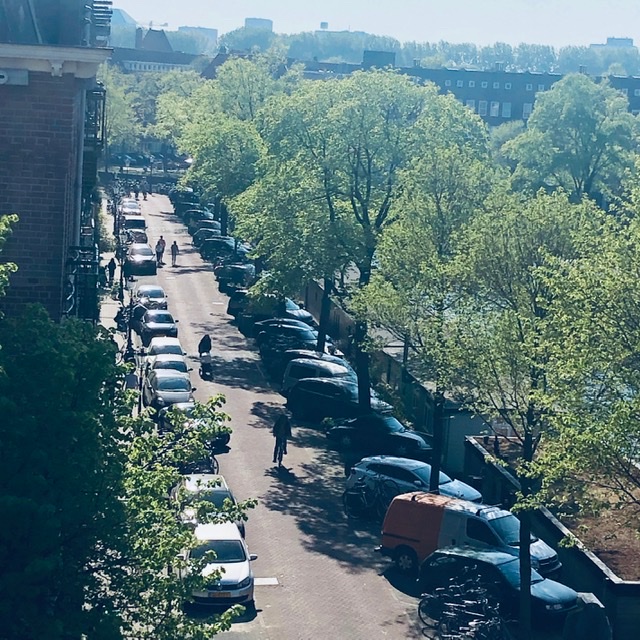
When traffic is calm and peaceful, people can fill the space they need without fear of being run over. Cars coexist with people and there is no need for defined spaces.
This is possible in Amsterdam because on one-way streets, the legal speed limit is 30km/h. Street alterations such as elevated intersections and speedbumps also slow traffic. On bi-directional streets, the legal speed limit remains 50km/h. However, the speed limit will soon be lowered to 30km/h all over the city. This will allow for more space to be given over to pedestrians, while bikes will share space with cars that must travel more slowly.
Some time ago, I wondered how I could learn to ride a bike in the streets of Madrid in the 1980s, while my niece cannot do so in 2020? Looking back today, I realize that I had the chance because cars were fewer and slower back then.
Perhaps it’s just as simple as that.
Sources:
- Colville-Anderen, M., The Arrogance of Space (Medium, 2019).
- Harms, L., Bertolini, L., & te Brommelstroet, M., Spatial and Social Variations in Cycling Patterns in a Mature Cycling Country Exploring Differences and Trends (Journal of Transport and Health, 1(4), 2014), pp. 232-242.
- Illich, Ivan, Energy and Equity (1974).
- Kuipers, Giseline, The Rise of National Habitus: Dutch Cycling Culture and the Shaping of National Similarity (European Journal of Social Theory 16 (1), 2013), pp.17-35.
- Nello-Deakin, S., Is There Such a Thing as a “Fair” Distribution of Road Space? (Journal of Urban Design, 2019).
- Van der Zee, R., How Amsterdam Became the Bicycle Capital of the World (The Guardian, 2015).
Photos in this essay by Ana Castan.

